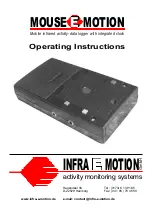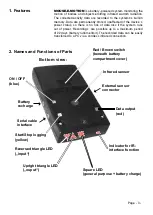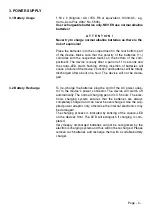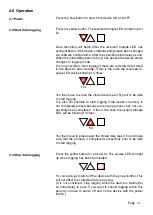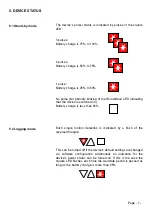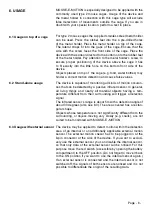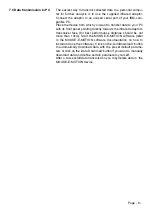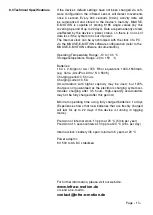
MOUSE-E-MOTION
is especially designed to be applied with the
commonly used type 2 mouse cages. Usage of the device and
the metal holder in connection with this cage type will exclude
false detections of movements outside the cage. If you are in
doubt with your special location, perform a test in place.
For type 2 mouse cages the supplied stainless steel metal holder
can be used. Press the rubber feet into the 4 pre-drilled holes
of the metal holder. Place the metal holder on top of the cage.
The lateral straps fit into the gaps of the cage. Ensure that the
side with the screw faces the front side of the cage. Place
the
device with the sensor directed to the bottom
onto the rubber feet
of the metal holder. Pay attention to the metal holder‘s screw: to
ensure proper positioning of the device above the cage it has
to fit exactly into the little hole on the bottom front side of the
device.
Objects placed on top of the cage (e.g. food, water bottles) may
hinder a correct motion detection and cause false values.
6.1 Usage on top of a cage
Page - 8 -
6.2 Stand-alone usage
The device is capable of monitoring all kinds of motion occuran-
ces that can be detected by a passive infrared sensor. In general,
all living things and nearly all material objects having a tem-
perature different from their surrounding will trigger a detection
signal.
The infrared sensor‘s range is about 5m with a detection angle of
about 30 degrees (also see 8.0). The area covered has a rectan-
gular shape.
Objects whose temperature is not significantly different from the
surrounding, or objecs moving very slowly (e.g. snails), are not
suited to be monitored with
MOUSE-E-MOTION
.
6. USAGE
6.3 Usage with external sensor
The device may be applied to detect motion within the detection
area of an internal or an additionally applicable external motion
sensor. The external motion snesor has to be plugged in at the
9-pin connector at the side of the device. If you want to exclusi-
vely use the external sensor you can disable the internal sensor,
so that only data of the external sensor will be noticed. For this
purpose move the red switch (accessible by opening the battery
compartment) to the OFF position. (Do not forget to move it back
to the ON position if you want to use the internal sensor again.)
If an external sensor is connected and the internal sensor is not
switched off, the signals of both sensors are noticed and it is not
possible to differentiate the origin of the resulting data.

